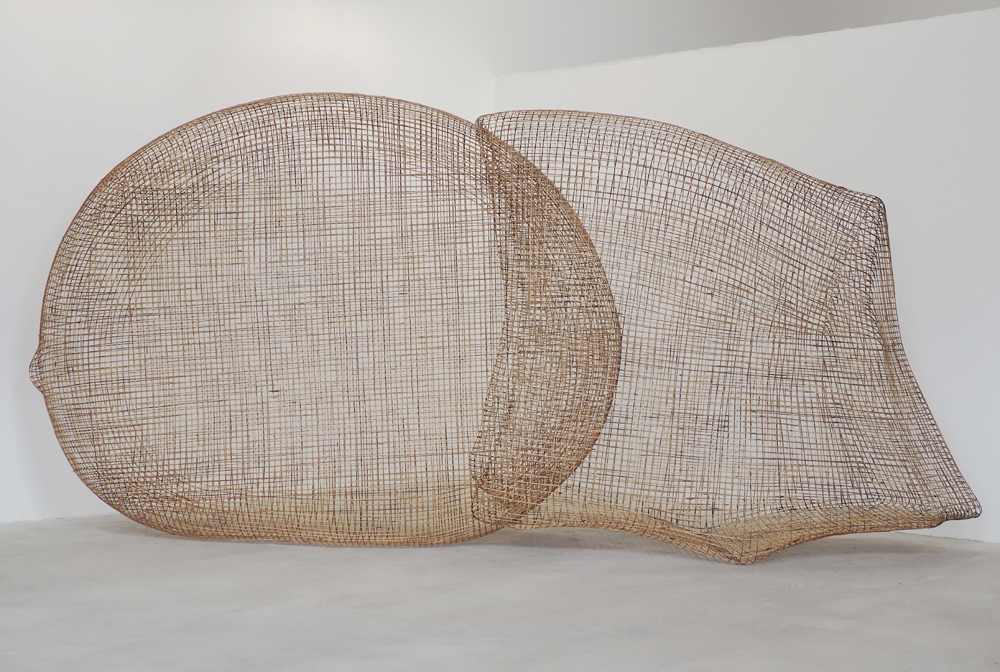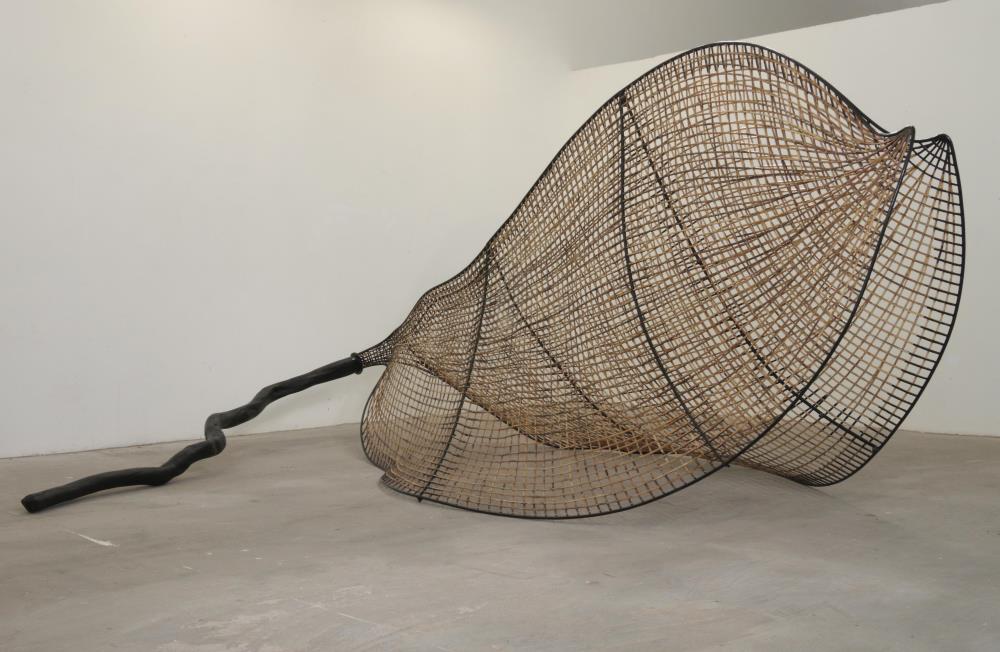Contemporary Art
Big Beng and Ordeal

|
Big Beng, 2017
Bamboo, metal |

|
Ordeal, 2018
Bamboo, wood, metal, oil-based paint, Indian ink |
The Work
Big Beng and Ordeal were inspired by flora found in Cambodia and Singapore.
The Cambodian Beng tree (Afzelia xylocarpa) is one of the most endangered trees in the region, its wood highly sought-after in Cambodia, Southeast Asia, and China. Big Beng takes the shape of the seeds of the tree. Pich likens Beng wood to luxurious rosewood – a timber rapidly being harvested to extinction. Though a protected species, the Beng tree continues to be unlawfully logged and sold on the black market as part of Cambodia’s multi-billion-dollar timber trade.
The Ordeal tree (Erythrophleum suaveolens), native to tropical Africa, is used in Singapore for landscaping, favoured for its spreading canopy. The bark was used by African tribes for making arrow poison, but also as a medicine. Intrigued by these opposing uses, Pich also found beauty in its woody seed pods – which inspired the design of Ordeal. One particular Ordeal tree in Upper Seletar Reservoir is listed as a Heritage Tree of Singapore.
Together Big Beng and Ordeal hover between the past and present, Angkor and Singapore, and around geopolitics in Southeast Asia. Pich resists defining his work, but acknowledges in them traces of his own and his country’s past. He invites visitors to interpret these larger-than-life works according to their own personal perspectives.
The Artist
Sopheap Pich
Cambodian
Born 1971
Sopheap Pich’s works spring from his immense curiosity. They are inspired by the memory of the Khmer Rouge, his life as a boy in a refugee camp, and the intimacy of the natural environment. His monumental, finespun, porous objects show how culture and traditions are passed down. These concepts help to define him as an artist, and in turn are embodied in his artworks.
His sculptures are primarily crafted from traditional Cambodian materials, such as bamboo, rattan, burlap, natural beeswax, and charcoal, to reflect the history of his nation and his complex relationship with his identity. Using elaborate techniques to create grid-like systems, the artist pushes the boundaries of the craft to depict the subtleties of the subjects he presents.
Pich’s works are in the Metropolitan Museum of Art, Solomon R. Guggenheim Museum, Centre Georges Pomipidou, San Francisco Museum of Modern Art, and Singapore Art Museum, and other notable institutions around the world. His works were also featured in dOCUMENTA (13) in 2012 and the Venice Biennale in 2017. In 2014, Art Asia Pacific called Pich “the Southeast Asian artist to watch at the moment”.